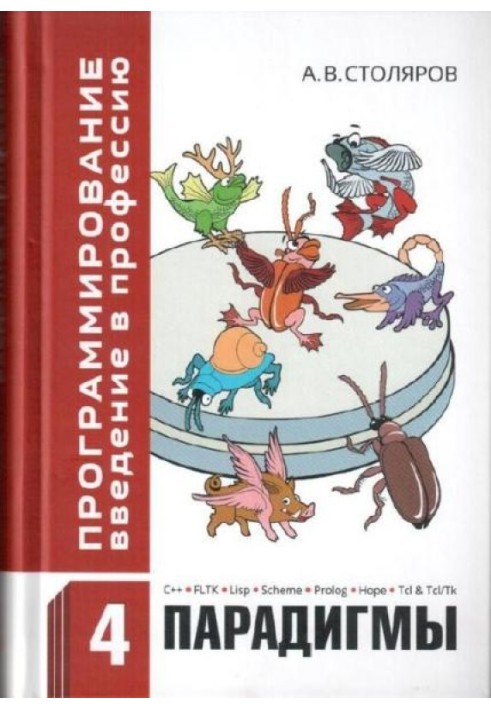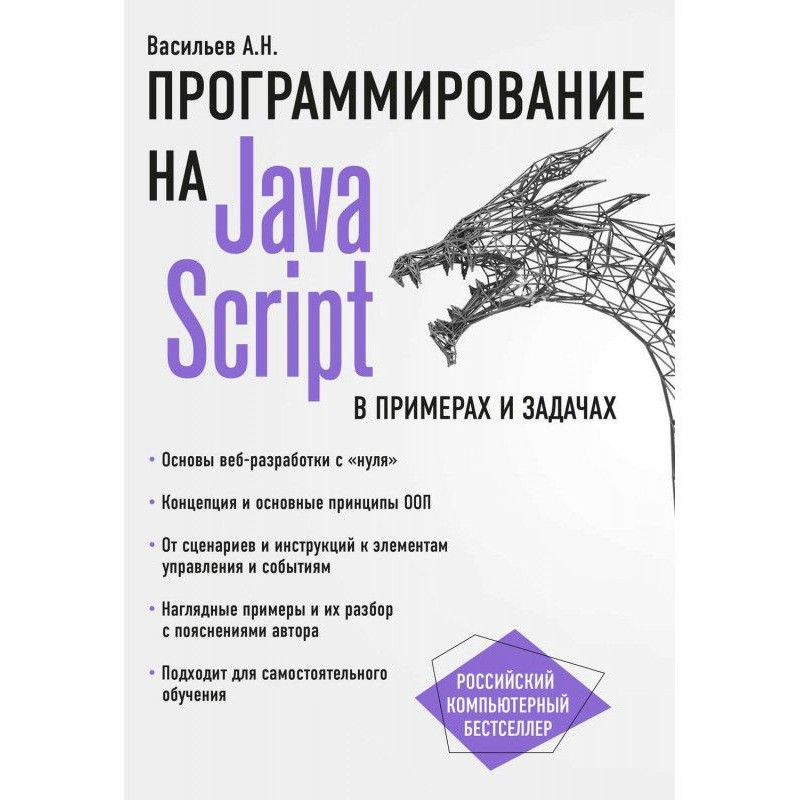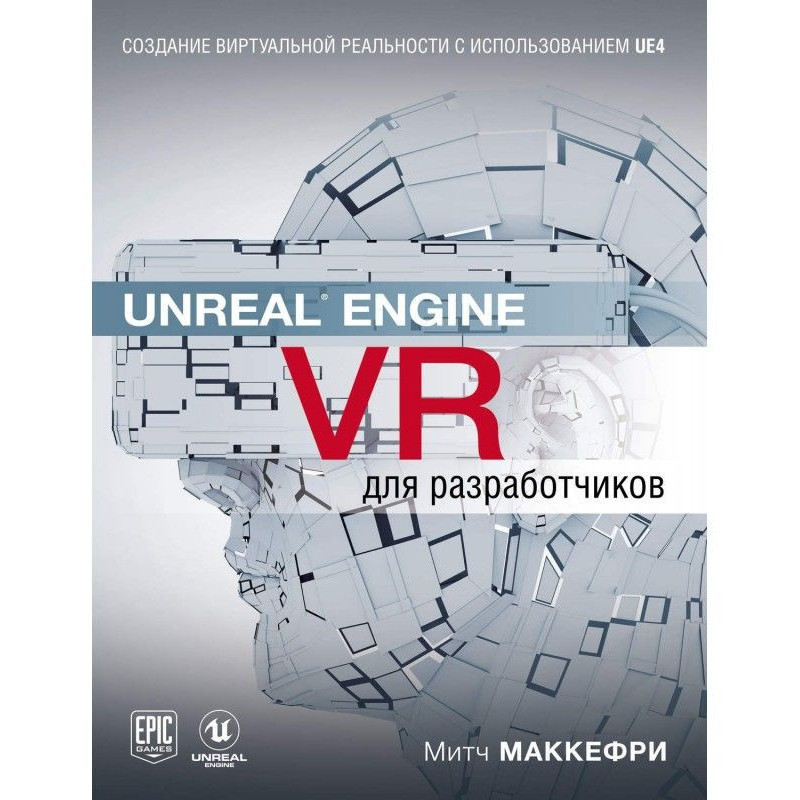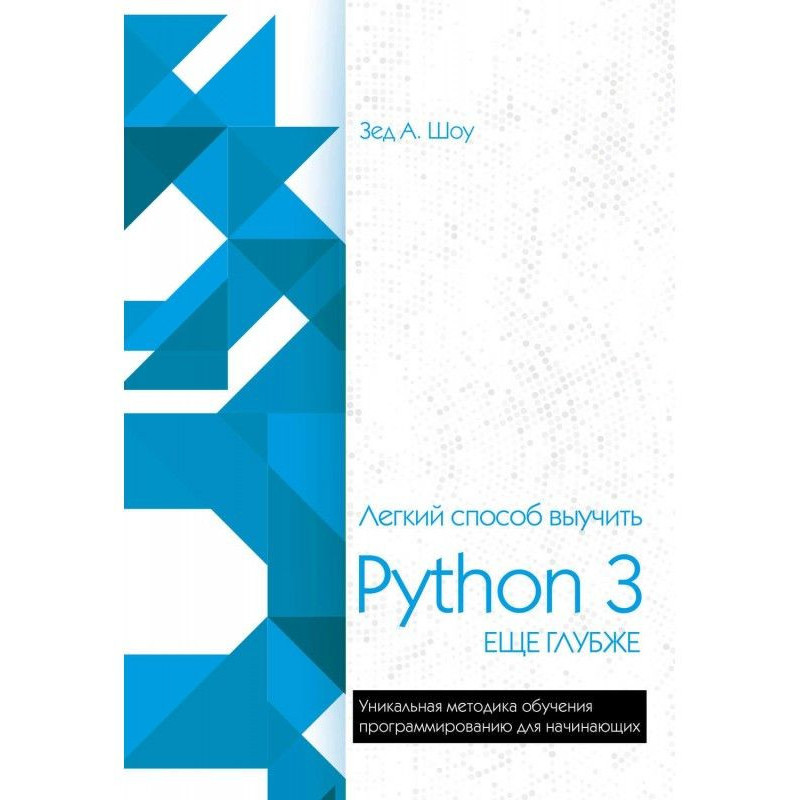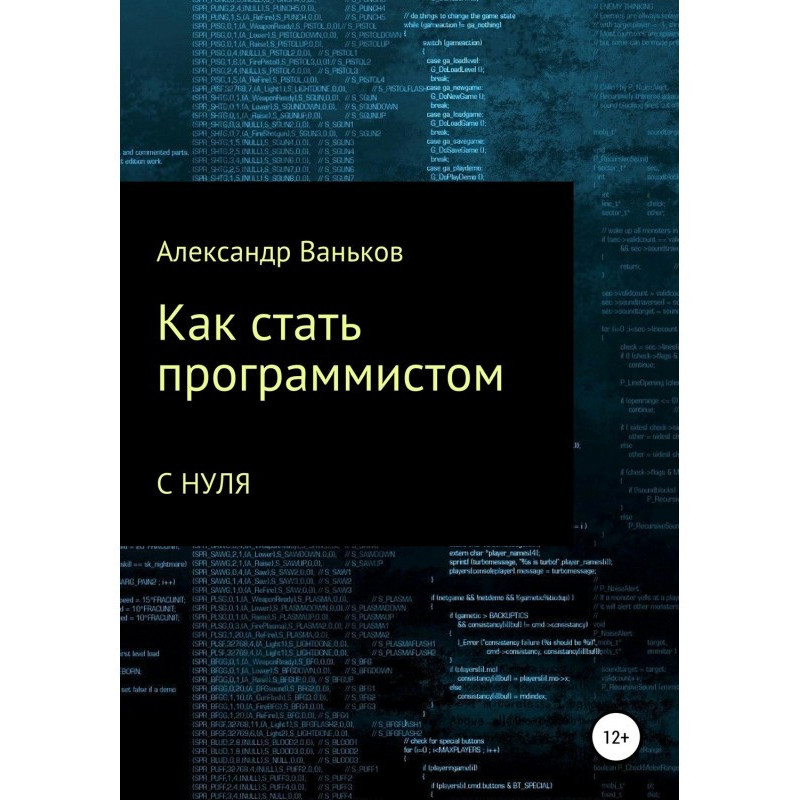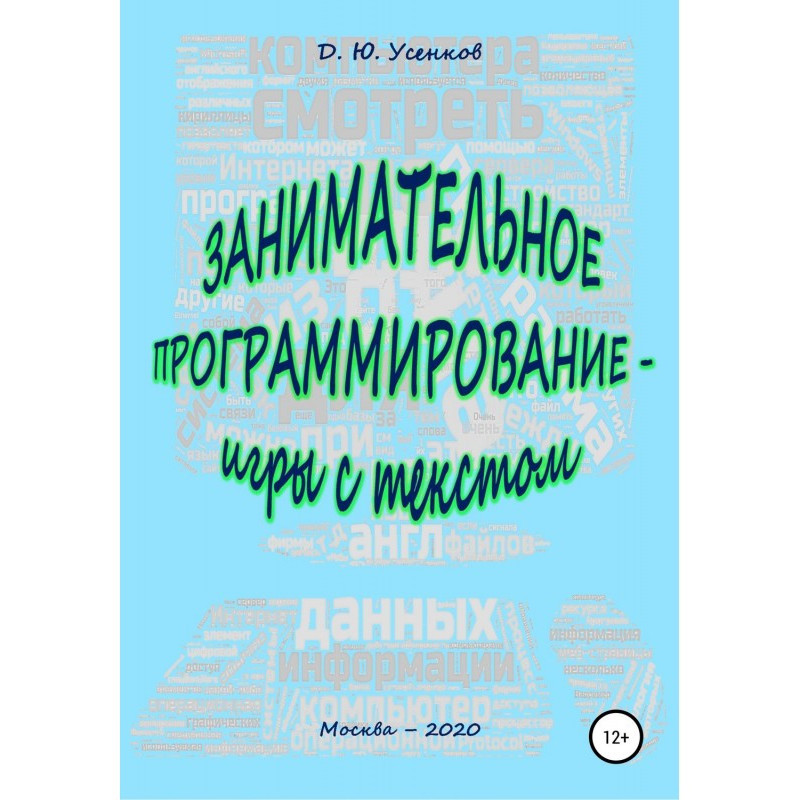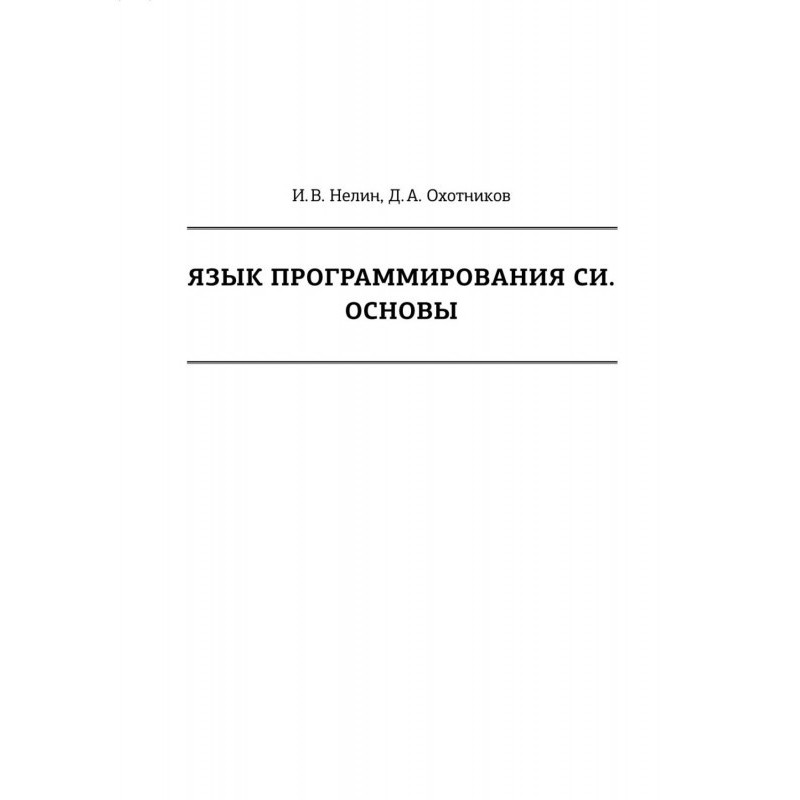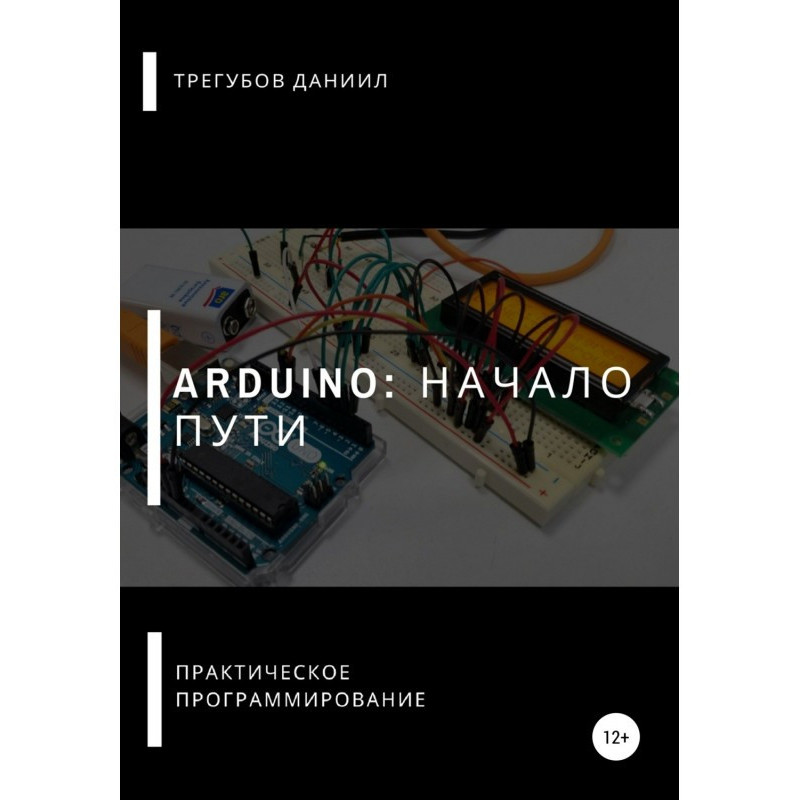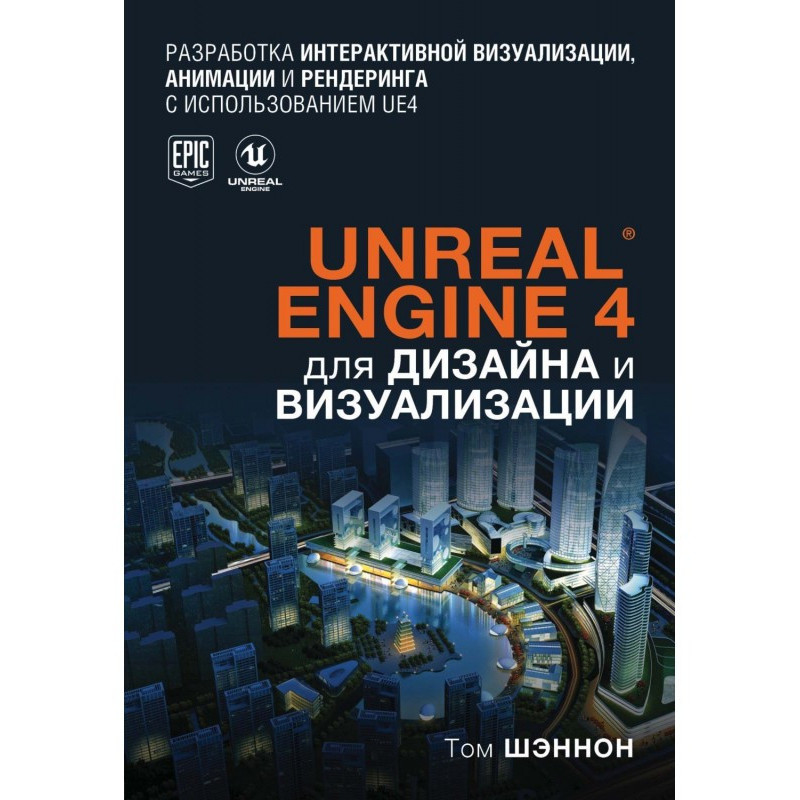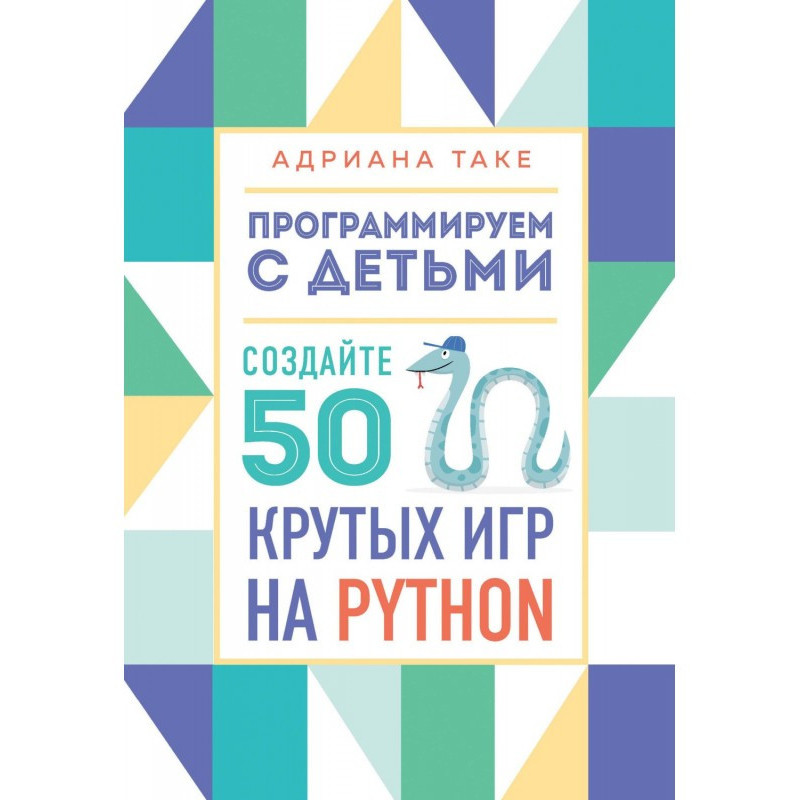Programming: introduction to the profession
 Instant download
Instant download
after payment (24/7)
 Wide range of formats
Wide range of formats
(for all gadgets)
 Full book
Full book
(including for Apple and Android)
The fourth volume of the book “Programming: An Introduction to the Profession” consists of parts IX–XII.
Part IX is devoted to programming paradigms as a general phenomenon; examples are discussed in languages already known to the reader, mainly the C language. It is worth highlighting here the paragraph devoted to the conceptual differences between Pascal and C (see 9.3.2, p. 69).
Part X examines the C++ language and the object-oriented programming paradigms supported in it and abstract data types. Basically, this part is formed from text that was previously published in a separate book (Introduction to the C++ language), but contains several chapters that were missing in that book; including a chapter devoted to graphical user interfaces and their creation using the FLTK library.
Part XI is devoted to exotic programming languages; Lisp, Scheme, Prolog are discussed here, and Hope is brought in to demonstrate lazy evaluation.
The main goal of the last, XII part was to demonstrate interpretation and compilation as independent programming paradigms. The part begins with a consideration of the Tcl language, the interpreted essence of which is unlikely to raise any doubts in anyone's mind. To complete the picture, the Tcl/Tk library is also considered, which allows you to very quickly create windowed applications with a GUI. The remainder of the part provides an overview of the conceptual features of interpretation and compilation; at the very end, an attempt is made to formulate the requirements for a hypothetical “pure compiler”, completely devoid of any elements of interpretation.
Data sheet
- Language
- Russian
Reviews
Відмінний ресурс для програмістів усіх рівнів!
Четвертий том книги «Програмування: вступ до професії» є справжнім скарбом для тих, хто прагне поглибити свої знання у світі програмування. Частини IX-XII охоплюють важливі парадигми програмування, зокрема порівняння мов Сі та Паскаль, що дозволяє читачеві зрозуміти концептуальні відмінності між ними. Особливо вражає розділ, присвячений графічним інтерфейсам користувача, де автор детально пояснює, як створювати віконні програми за допомогою бібліотеки FLTK. Частина XI, що розглядає екзотичні мови програмування, відкриває нові горизонти для тих, хто хоче експериментувати з Ліспом, Scheme або Прологом. Остання частина про інтерпретацію та компіляцію є чудовим завершенням, яке підкреслює важливість розуміння цих концепцій для будь-якого програміста. Книга написана зрозумілою мовою, з безліччю прикладів, що робить її доступною навіть для початківців. Я б рекомендував цей том усім, хто хоче не лише вивчити програмування, але й зрозуміти його глибину та різноманітність!

